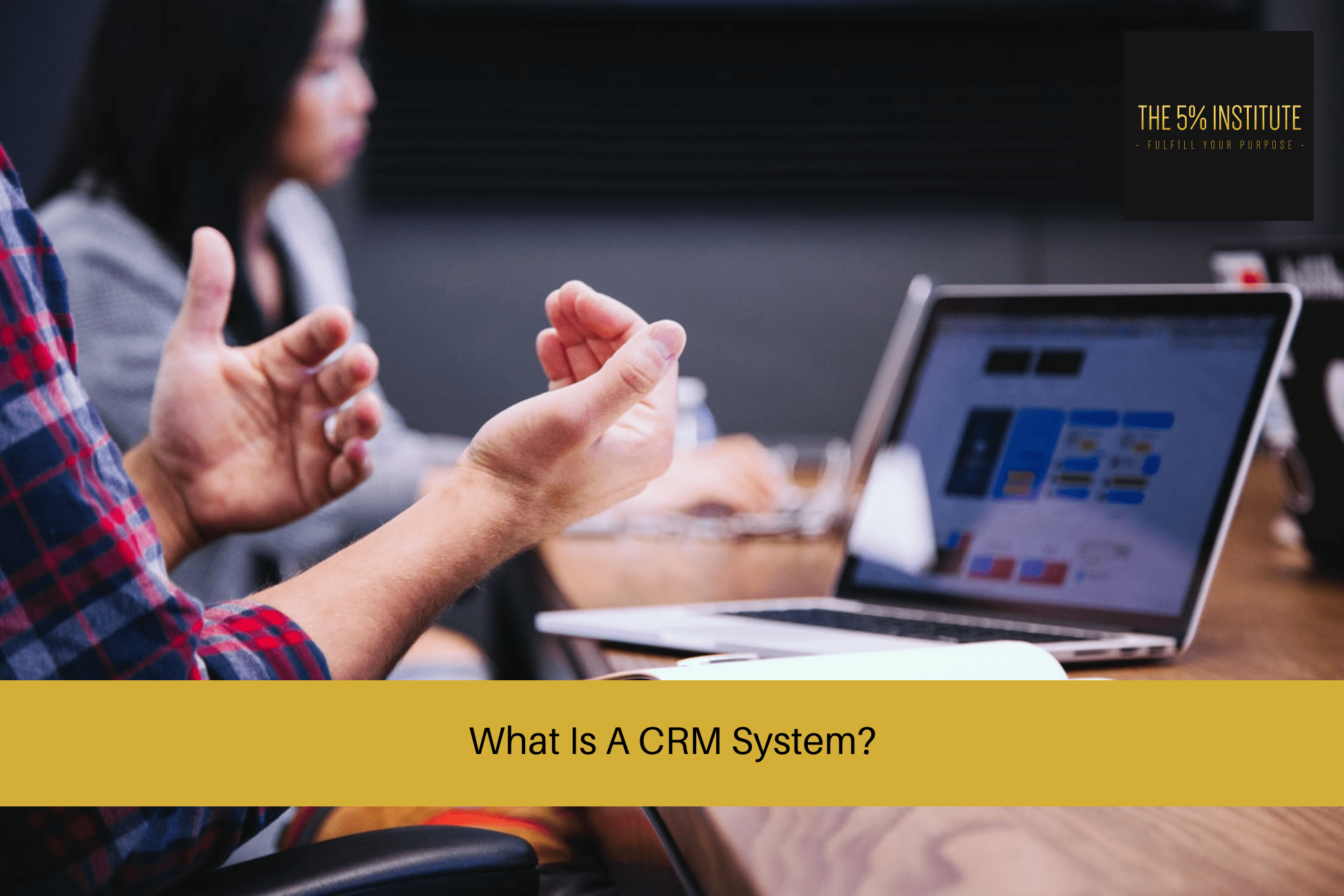
What Is A CRM System?
In today’s highly competitive business landscape, customer relationship management (CRM) has become a crucial aspect of successful organizations. A CRM system is a powerful tool that enables businesses to manage and optimize their interactions with customers throughout the entire customer lifecycle.
This article will delve into the definition, benefits, types, key features, implementation process, popular systems, factors to consider, challenges, and best practices associated with CRM systems.
Introduction
In the digital age, businesses face immense challenges in understanding and meeting the evolving needs of their customers.
A CRM system serves as a centralized platform that allows businesses to effectively track, analyse, and enhance customer interactions.
By leveraging customer data, a customer relationship management system empowers organizations to build stronger relationships, boost customer satisfaction, and drive long-term growth.
Definition of CRM System
A CRM system refers to a technology-driven solution that enables businesses to manage and organize customer-related information, interactions, and activities.
It acts as a centralized repository where data from various touchpoints is collected, stored, and analysed.
This data includes customer contact details, purchase history, preferences, and communication records, among others.
Benefits of CRM System
Implementing a customer relationship management system offers numerous benefits for businesses:
1. Enhanced Customer Relationship Management
A CRM system provides a holistic view of each customer, enabling businesses to understand their preferences, behaviour, and history.
This insight allows organizations to deliver personalized experiences, tailor marketing campaigns, and improve customer satisfaction.
2. Increased Sales and Revenue
By leveraging the customer data captured in a system, businesses can identify opportunities, prioritize leads, and streamline their sales processes.
This targeted approach leads to higher conversion rates, improved sales performance, and increased revenue.
3. Improved Customer Service
A customer relationship management system enables businesses to deliver exceptional customer service by providing quick access to relevant customer information.
With a comprehensive understanding of customer needs and preferences, support teams can address inquiries, resolve issues, and provide timely and personalized solutions.
4. Streamlined Marketing Efforts
CRM systems enable businesses to segment customers based on demographics, preferences, and behaviours.
This segmentation allows for targeted marketing campaigns, precise messaging, and improved campaign effectiveness.
5. Data-driven Decision Making
With a CRM system, businesses can generate valuable insights by analysing customer data.
These insights inform strategic decision making, product development, and overall business growth.
Types of CRM Systems
There are several types of CRM systems available, each catering to specific business needs. The common types include:
1. Operational CRM
Operational CRM systems focus on managing customer interactions across various touchpoints.
They streamline processes related to sales automation, marketing automation, and customer service.
2. Analytical CRM
Analytical CRM systems primarily focus on analysing customer data to derive insights.
These insights are used to understand customer behaviour, identify trends, and make data-driven decisions.
3. Collaborative CRM
Collaborative CRM systems facilitate effective communication and collaboration between different departments within an organization.
They aim to enhance customer service by providing a unified platform for teams to work together.
4. Strategic CRM
Strategic CRM systems focus on long-term customer relationship management strategies.
They aim to align business objectives with customer needs and preferences to maximize customer satisfaction and loyalty.
Key Features of CRM System
CRM systems come equipped with a variety of features designed to streamline customer relationship management processes.
Some key features include:
1. Contact Management
A CRM system allows businesses to maintain a comprehensive database of customer contacts, including their names, addresses, phone numbers, and email addresses.
This feature ensures that businesses have easy access to accurate customer information.
2. Interaction Tracking
CRM systems enable businesses to track and record customer interactions across multiple channels, such as phone calls, emails, social media, and website visits.
This feature provides a complete history of customer communications and helps in delivering personalized experiences.
3. Lead Management
CRM systems provide tools for managing leads, from capturing and qualifying leads to assigning them to sales representatives.
This feature ensures that businesses can effectively nurture leads and convert them into paying customers.
4. Sales Pipeline Management
CRM systems offer functionalities to track and manage the sales pipeline.
This feature allows businesses to monitor the progress of deals, forecast revenue, and identify potential bottlenecks in the sales process.
5. Reporting and Analytics
CRM systems generate comprehensive reports and analytics based on customer data.
These insights help businesses measure performance, identify trends, and make data-driven decisions to improve sales and customer service strategies.
6. Workflow Automation
CRM systems automate repetitive tasks and workflows, such as sending follow-up emails or assigning tasks to team members.
This feature increases efficiency and frees up time for sales and customer service teams to focus on more critical activities.
7. Customer Segmentation
CRM systems enable businesses to segment customers based on various criteria, such as demographics, purchase history, or engagement level.
This segmentation allows for targeted marketing campaigns and personalized customer interactions.
8. Integration Capabilities
CRM systems integrate with other business tools and platforms, such as email marketing software, social media platforms, and customer support systems.
This integration ensures seamless data flow and provides a unified view of customer interactions.
CRM System Implementation Process
Implementing a CRM system involves several steps to ensure a successful integration into the business’s operations.
The implementation process typically includes the following stages:
1. Define Goals and Objectives
Before implementing a CRM system, businesses need to identify their goals and objectives.
This includes determining what they want to achieve with the CRM system, such as improving customer satisfaction, increasing sales, or enhancing marketing effectiveness.
2. Assess Business Needs
Businesses should evaluate their existing processes and identify areas where a CRM system can provide the most value.
This involves understanding the specific pain points and challenges faced in customer relationship management.
3. Select the Right CRM System
Choosing the right CRM system is crucial for successful implementation.
Businesses should consider factors such as scalability, ease of use, customization options, integration capabilities, and budget when selecting a CRM system that aligns with their needs.
4. Data Migration
Migrating existing customer data into the CRM system is a critical step.
Businesses should ensure that data is clean, accurate, and properly mapped to the fields in the CRM system.
This ensures a smooth transition and prevents data discrepancies.
5. System Configuration and Customization
Once the customer relationship management system is in place, it needs to be configured and customized according to the business’s requirements.
This involves setting up user roles and permissions, defining workflows, and customizing fields and layouts to match the business processes.
6. User Training and Adoption
Proper training is essential to ensure user adoption and maximize the benefits of the CRM system.
Businesses should conduct training sessions to familiarize employees with the CRM system’s features and functionality, emphasizing its value in their day-to-day tasks.
7. Ongoing Maintenance and Support
After implementation, businesses should have a plan in place for ongoing maintenance and support.
This includes regular system updates, addressing user queries and issues, and continuously optimizing the CRM system to align with evolving business needs.
Popular CRM Systems
The market offers a wide range of CRM systems with varying features and capabilities.
Some popular CRM systems include:
1. Salesforce
Salesforce is one of the leading customer relationship management providers, offering a comprehensive suite of tools for sales, marketing, and customer service.
It provides a highly customizable platform suitable for businesses of all sizes.
2. HubSpot CRM
HubSpot customer relationship management offers a user-friendly interface and integrates seamlessly with HubSpot’s marketing and sales tools.
It provides features such as contact management, lead tracking, and email automation.
3. Microsoft Dynamics 365
Microsoft Dynamics 365 is a cloud-based customer relationship management solution that integrates with other Microsoft applications, such as Outlook and Excel.
It offers a wide range of functionalities for sales, marketing, and customer service.
4. ActiveCampaign
ActiveCampaign is a popular choice for small and medium-sized businesses.
It provides a user-friendly interface, automation features, and integration with various third-party applications.
Related article: ActiveCampaign – Is It Really Worth It?
5. Pipedrive
Pipedrive is a customer relationship management system focused on sales pipeline management.
It offers an intuitive interface and features that help streamline sales processes, manage leads, and track deals.
Factors to Consider When Choosing a CRM System
When selecting a CRM system for a business, several factors need to be considered:
1. Business Needs and Scalability
It should align with the specific needs of the business and be scalable to accommodate future growth.
2. User-Friendliness
It should have an intuitive interface and be easy for employees to learn and use.
3. Customization Options
It should provide flexibility in customization to match the business’s unique processes and requirements.
4. Integration Capabilities
Consider whether the CRM system can seamlessly integrate with other tools and platforms already used by the business.
5. Security and Data Privacy
Ensure it provides robust security measures to protect customer data and complies with relevant data privacy regulations.
Common Challenges in CRM System Implementation
Implementing a customer relationship management system can present certain challenges that businesses should be aware of:
1. Data Quality and Integration
Ensuring data quality and proper integration of existing systems and databases can be a complex task during customer relationship management system implementation.
2. User Adoption
Employees may resist using the customer relationship management system if they perceive it as an additional burden or if they lack proper training and understanding of its benefits.
3. Change Management
Implementing a customer relationship management system often involves changes to existing processes and workflows, which may require proper change management strategies to mitigate resistance.
4. Data Migration Issues
Data migration from legacy systems to the customer relationship management system can be challenging, requiring careful planning and validation to avoid data loss or corruption.
5. System Customization and Configuration
Configuring the customer relationship management system to match specific business requirements may require expertise and time to ensure optimal setup.
Best Practices for CRM System Implementation
To ensure a successful CRM system implementation, businesses should consider the following best practices:
1. Clearly Define Goals and Objectives
Having well-defined goals and objectives from the beginning helps align the implementation process with the desired outcomes.
2. Involve Key Stakeholders
Engaging key stakeholders, such as management, department heads, and end-users, in the implementation process fosters buy-in and ownership.
3. Prioritize Data Quality
Ensure data accuracy, cleanliness, and integrity before migrating it to the customer relationship management system.
Regularly monitor and clean data to maintain its quality.
4. Provide Comprehensive User Training
Invest in comprehensive training programs to educate employees about the customer relationship management system’s features and benefits, encouraging user adoption.
5. Start with a Pilot Implementation
Test the customer relationship management system’s functionality and effectiveness by starting with a pilot implementation in a specific department or team before rolling it out across the entire organization.
Conclusion
CRM systems play a pivotal role in enhancing customer relationship management and driving business growth.
By leveraging the power of data and automation, businesses can optimize their interactions with customers, increase sales, and improve customer satisfaction.
However, successful implementation requires careful planning, selecting the right customer relationship management system, addressing challenges, and following best practices.
By doing so, businesses can unlock the full potential of customer relationship management systems and gain a competitive advantage in today’s customer-centric market.
FAQs
1. Can a CRM system be customized to fit specific business processes?
Yes, most CRM systems offer customization options to align with specific business processes and requirements.
2. Are CRM systems only beneficial for large businesses?
No, CRM systems are beneficial for businesses of all sizes.
They help small businesses streamline processes, improve customer interactions, and drive growth.
3. How long does it take to implement a CRM system?
The implementation time can vary depending on the complexity of the business and the CRM system chosen.
It can range from a few weeks to several months.
4. Can CRM systems integrate with other business tools and platforms?
Yes, CRM systems often offer integration capabilities to connect with other tools such as email marketing software, customer support systems, and social media platforms.
5. Is data security a concern with CRM systems?
CRM systems prioritize data security and provide measures to protect customer data.
It’s essential to choose a CRM system that complies with data privacy regulations and implements robust security measures.
Want To Close Sales Easier?
Are you committed to closing sales a lot easier, and consistently?
If so, you should check out our self-paced and affordable online sales training program; The 5% Sales Blueprint.
It’ll give you everything you need to close sales consistently.
To learn more, simply click on the link below for more information.
Our Online Sales Training Program – The 5% Sales Blueprint.



